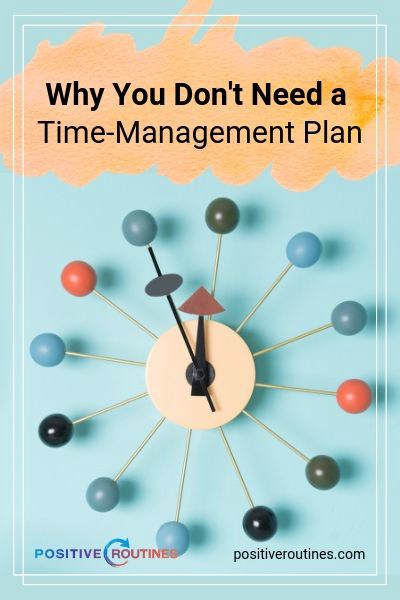Trying to be more productive? Well, what if we told you the best thing you could do is to throw your time-management plan out the window?
You might think us a little hasty, but allow us to explain. Experts are now arguing that it’s not your time you need to manage. It’s your attention.
Let’s take a closer look at why your time-management techniques might be misleading you, according to experts, and give you some easy tips on what to do instead.
Your Time-Management Plan isn’t Helping

Writing for the New York Times, author and psychologist Adam Grant explains the pitfalls of time management. “Being prolific is not about time management,” he says. “There are a limited number of hours in the day, and focusing on time management just makes us more aware of how many of those hours we waste.”
Grant should know. At just 28 years of age, he became the youngest tenured professor at the Wharton School of the University of Pennsylvania, where he specializes in organizational psychology. Since then he’s churned out best-selling books and delivered inspirational TED Talks on the topic.
Part of the problem, says Grant, is seeing productivity as a virtue in itself rather than as a means to an end.
“If productivity is your goal, you have to rely on willpower to push yourself to get a task done. If you pay attention to why you’re excited about the project and who will benefit from it, you’ll be naturally pulled into it by intrinsic motivation.”
This is the basis of attention management. “Attention management is the art of focusing on getting things done for the right reasons, in the right places and at the right moments.”
Pay Attention to What You Pay Attention to

So if we’re to define attention management a little further, it’s seeing productivity not as the amount of time you spend on something, but the quality of the time you spend on it.
In the words of Maura Thomas, another productivity guru and proponent of attention management, it’s about being intentional instead of reactive. It’s using your priorities and goals as the basis for where you direct your focus. It’s regaining control over your time.
Sounds great, right? But how do you put attention management into practice? Here are some pointers.
1. Find your motivation

When we struggle with productivity, it’s not necessarily that we lack efficiency — it’s that we lack motivation, says Grant. When he talks about “intrinsic motivation”, he’s talking about finding the deeper why behind your projects and tasks, because intrinsic (or internal) motivators are consistently found to be more powerful than extrinsic (external) ones.
In other words: Focus on things that hold personal value to you, and you’ll be more motivated, and therefore more productive, when it comes to doing them.
2. Think about when as well as why

Grant also talks about the significance of when we do things. That means designing your schedule in such a way that you maximize your attention.
For example, avoid doing a boring task right after one you enjoy. In a study, this led people to perform worse at the boring task, because their focus kept wandering back to the enjoyable one.
Instead, says Grant, save your exciting activity as a reward for after you tick off the not-so-fun one.
Another trick is to align tasks with your circadian chronotype (whether you’re a morning person or a night person). Do analytical tasks when you’re most alert, routine tasks when you’re in an attention trough, and creative work when your brain is feeling fuzzy (mind-wandering facilitates creative thinking). For morning people, or larks, that means doing your creative work in the evening and analytical work when you first wake up. For night people — owls — do the opposite.
3. Avoid multitasking

Managing your attention means being more focused on the things that matter. And we probably don’t need to tell you that multitasking is the enemy of that. Research shows that multitasking makes your attention suffer. In focusing on multiple things, you end up focusing on nothing. Goodbye, time. Goodbye, productivity.
Half an hour of highly focused work is better than three hours of semi-focused mental dispersion. Pick a task and give it the undivided attention it deserves.
4. Schedule your distractions

Your time-management plan probably tells you to cut out distractions altogether. Most time management theories promote the idea that you should complete as much work as possible in whatever time you have, which therefore means no interruptions or distractions allowed. Says Grant, switch your focus to attention management, and you can keep your social media scrolling habit. You just have to be strategic about when you indulge it.
Giving yourself some scope for downtime not only eases the willpower burden of having to constantly resist distractions, but it also prevents mental burnout so you can get back to work with renewed focus.
Ready to Ditch Your Time-Management Plan?

So is attention management the best strategy for you? We’d argue that you don’t have to renounce everything you’ve ever learned about time management: There’s still plenty to be gleaned from it. But as Grant and others have put forward, there’s incredible value in learning to manage our attention — especially given the environment in which we currently exist.
As Maura Thomas puts it: “Attention management is our most important defense against a world that is constantly conspiring to steal it.”
Your turn: What’s your time-management plan? Does it work for you? Tell us more in the comments.
For more ways to stay focused, check out this guide on managing your energy.

Author: Tania Braukamper
Tania Braukamper is an Australian-born writer and photographer. She believes in curiosity, kindness, and adventure as a state of mind.

Let Us Know What You Think